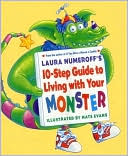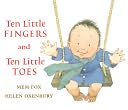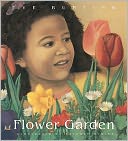Don't get me wrong, we love our library volunteers. From the wonderful folks who plan and execute adult programs, to the lady who quietly stamps discards and marks out bar codes and adds them to the shelves to be sold, we couldn't quite function without them. There are times, though, when well-meaning people offer their services to do something we a) can't legally have them do, or b) find the most enjoyable part of our job.
"Doing" story time definitely falls under the second category (working the circulation desk, which gives you access to people's personal information, would fall under the first). There are certainly times when we welcome guest readers, but most Children's Librarians are loathe to give up the 'fun' part of their job (why does no one ever offer to write my monthly reports?) There is also the tiny little detail that "doing" story time involves a bit more than sitting down with a picture book and a rapt audience. In fact, it is...and I have to say it on behalf of my fellow Children's Librarians...a bit insulting to boil down our college degrees, librarian certifications, and years of experience, to something anyone with a third grade reading level could do.
Oh, dear, I can't write that without sounding like I am looking for praise. I'm really not. What I do is not insanely complicated, and it's not something you have to be especially gifted or talented to do. It's not even something I do especially well, if you have been around enough other librarians to compare. It's just that, when people ask us what we did today, and we say we prepared for story times, they often look at us expectantly, waiting for us to say what we did with the other 7.5 hours of our day.
So, here are the steps I take to plan a typical story time, just to give a general idea. Every librarian does things differently, of course, vastly differently. Sometimes we have old favorites that we can pull out in ten minutes - but, before they became favorites, they probably took half a day to plan, also!
Step 1 - Theme. For the past few years, we have focused on a different letter each week. This year, I decided to go with favorite authors. This meant making a list of authors who had at least 3 or 4 picture books, making sure I had a balance of old and new, male and female, etc. I tried not to pay attention to ethnicity until the list was done, then checked for balance there. As I planned further, some authors came off the list, and enough others were added that I have next year taken care of, too!
Step 2 - Choosing Books and Subtheme(s)- Okay, so, for the first week, we have Mem Fox. I gathered all the books we had in our collection, and re-read each one. All her books are delightful, but some are too long for a story time. Some are not appropriate for the age group. Some are better when read one-on-one. I finally whittled it down to a handful that I really liked (this is VERY important - if you don't like them, the kids will be able to tell, and the whole thing will flop!) Then I looked for a subtheme - colors? Family? Repetition? There doesn't HAVE to be a subtheme every time. You don't HAVE to teach a reading or math or science concept every time, but it's nice if you do, and can help everything flow together.
I stumbled on my subtheme while doing the next step...
Step 3 - Author Research. Obviously not necessary if you aren't choosing by authors, but still fun. Many authors have their own web sites and/or blogs, and I hit the jackpot with Mem Fox. Seriously, when you are done here, go to memfox.com and be prepared to lose the rest of your afternoon. My happiest find is that she gives the story behind many of her stories, and they are very definitely stories in and of themselves. Eureka! My subtheme is how authors choose what to write about, and how it isn't always easy but they don't give up.
I printed out a picture of her, jotted down some tidbits about her life kids might find interesting, and printed out her stories behind each of the books I had selected.
Step 4 - Organize the Stories. When I looked at the story-behind-the-stories together, they created a natural flow and segue from book to book. Here is where I usually add some personal touches. This is very important. You do not want to just be a figure up in the front of the room reading a story, you want to be Miss A., who remembers that you lost your first tooth last week, and who has a silly little girl of her own who has the same sparkly red shoes you do. You want these children (and their parents) to feel absolutely comfortable asking where to find a certain book, or if you have any information on x, y, or z. You also want to model reading and writing skills to both the kids and their caregivers, and, you know what? When I tell a story about what my bad dog did, and then little Johnny tells me about something HIS dog did, we just worked on those skills! And it didn't hurt a bit!
Step 5 - Props? Again, something you don't HAVE to have, but kids are usually visual, tactile little creatures, so they can only help. Unless you bring your tortoises in for "Emma's Turtle", and they pee all over the stage, but that's another blog post. For this story time, which includes the story Wilfrid Gordon McDonald Partridge,

I decided to bring in some items from home that hold memories for me. For Laura Numeroff's 10-Step Guide to Living With Your Monster,

a few weeks later, I made a large copy of the monster, attached it to a bigger board with Velcro tabs all around, and then made each of the items he will need, for the kids to add as they come up in the story. That took about an hour to make - and will occupy ten minutes of story time, tops.

I decided to bring in some items from home that hold memories for me. For Laura Numeroff's 10-Step Guide to Living With Your Monster,

a few weeks later, I made a large copy of the monster, attached it to a bigger board with Velcro tabs all around, and then made each of the items he will need, for the kids to add as they come up in the story. That took about an hour to make - and will occupy ten minutes of story time, tops.
Step 6 - Craft/Activity. This one can take the longest to plan, just because it can be hard to find the right craft. It has to be something 2-3-year-olds can do with minimal help, but can't be so easy that they are finished too quickly. The materials should be inexpensive or already be on hand. Just coloring does not go over well with a large percentage of kids. There should be plenty of room for creativity. Perhaps most importantly, you don't want to overly annoy the custodian, or anyone who may be using the room after you.
I planned to end with Ten Little Fingers and Ten Little Toes,

and I wanted to do something with hand and possibly footprints. The problem is, we have done a million handprint projects for various Mothers' Days, and even if they would be new to the kids, I am bored with them. I cruised various favorite craft sites I have bookmarked, sent out a query on a list serve, and finally decided to make flowers, using our feet for leaves and hands for the flowers - which will segue nicely into next week's story time, when our Eve Bunting story time begins with Flower Garden.

and I wanted to do something with hand and possibly footprints. The problem is, we have done a million handprint projects for various Mothers' Days, and even if they would be new to the kids, I am bored with them. I cruised various favorite craft sites I have bookmarked, sent out a query on a list serve, and finally decided to make flowers, using our feet for leaves and hands for the flowers - which will segue nicely into next week's story time, when our Eve Bunting story time begins with Flower Garden.

Step 7 - Gather/Prepare Supplies. I will have one row of tables for those who want to use paint, and one for those who prefer sticking with markers. Figure on 40 kids for now, and spend an hour painting stems on big paper, so those are already done. List the other things I will need to have out and ready: Paint in bowls, paint brushes or sponges, the prepared paper, wet and dry rags, big t-shirts to cover our clothes, markers, soap, a stool next to the sink. Some of these things are always in the craft room, the others go into a box along with the list, with the date neatly labeled. Pull the books I am reading now, so they aren't checked out when the time comes, and on the day of story time, pull all the rest of her books to display. Send myself an e-mail, reminding myself to bring props from home (and to call the people with llamas to see if I can have some fur to show when we do Anna Dewdney).
And there you have one hour-long story time (give or take). The planning part of it, anyway - all done in between helping patrons, writing reports, ordering books, and all the other things we do all day. The good part is - I enjoy all of that! I think every children's librarian needs to be a little scattered and a little anal-retentive at the same time. If that sounds like you, then you may want to consider becoming a children's librarian, so you can "do" your own story times - because you can't have mine! (And, R.S., I think you are both of those things in plenty, so stop sweating it! You'll be great!)
Yeah, that drives me nuts when people want to volunteer to "read to the children". In no universe are there hordes of children waiting in neat little rows to be read to! As a matter of fact, several of my regular attendees are out of towners who come to my library instead of their own b/c that's all the librarian does - sits the kids down and drones through a stack of books. Plus, while kids will love being read to by a family member whether or not you're good at reading aloud, some totally unrelated kid is going to be a lot pickier believe you me.
ReplyDelete"In no universe are there hordes of children waiting in neat little rows to be read to!" Exactly! And they get insulted when I try to explain that, no, even if they came at a certain time each day, "just to read to kids who want me to", I can't guarantee that there will actually be any kids in the building at that time! And if I set up and advertise a time for kids to be read to, parents expect it to be a story time, which leads us back to the beginning.
ReplyDelete